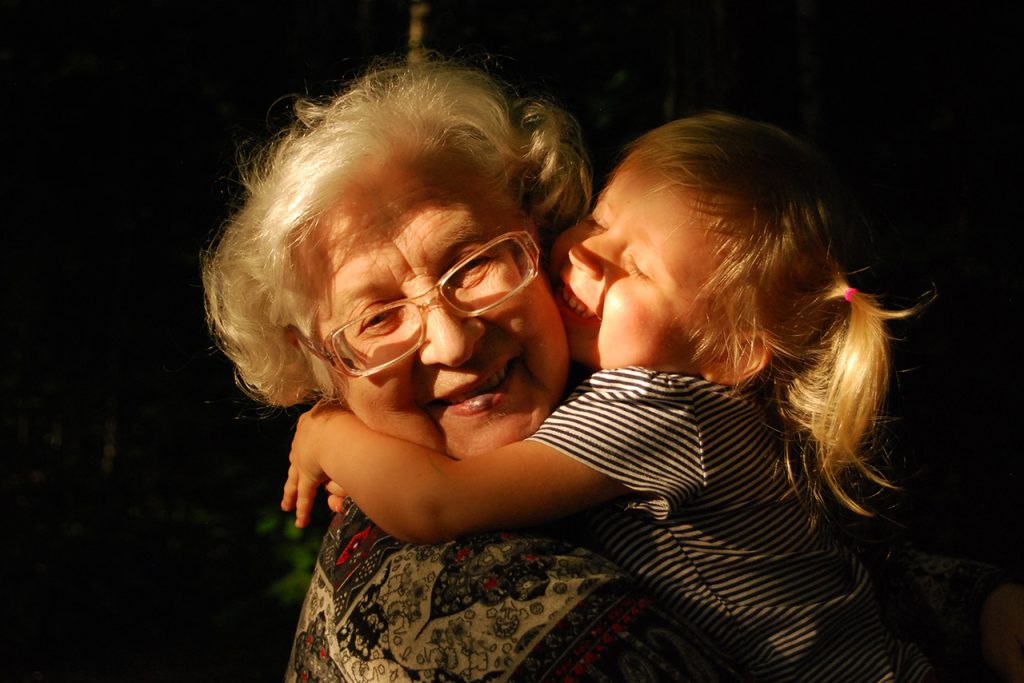It’s a holly jolly Christmas, it’s the best time of the year…
…or is it?
Whether you celebrate Christmas, Hanukkah, New Year, or just like to get into the swing of things, the holiday season comes loaded with expectations. Expectations that often come crashing around your ears with the first family argument, still-frozen turkey, or failure to find someone to kiss at midnight.
But! It doesn’t have to be this way! And with our own crack team of experience design Santa Clauses ready to swoop in on their sleigh and save the day, for Campfire 36 we decided to pit the finest experience designers from one side of the world (this APAC edition) against the finest experience designers from the other (the US edition – read the debrief here) to see who could come up with the bestest, craziest, silliest, brilliant-est, most effective way to make the festive season even better.
What’s the point of it all? Well, at the WXO we believe in the importance of divergent and convergent questions in the innovation process. Sometimes, you need to walk away from a problem in order to find the answer you’re looking for.
And by redesigning Christmas or New Year, we become richer in the way we design our experiences in general, and richer in the conversations we might have with our clients – by thinking about to recreate the magic of giving, for example, we could offer a brand a new way to connect with their customers through a giving experience.
For a real-life example, check out this video of what happened when a projection mapping expert brought his work home and lit up his local neighbourhood:
So: put down the mince pies. Put on your thinking cap – perhaps it’s shaped like a Christmas tree, as WXO CEO and Campfire host James Wallman’s was for this session. And get ready to believe in a better festive season.
4 Experience Design Methods For The Holidays (And Beyond)

To get the conversation started, we asked our participants to think about their favourite experience design tools – their go-to methods when getting started on an idea.
- What’s your intention?
You shouldn’t just wander into an experience – you should start by thinking about what purpose you want it to have, or what emotion you want the audience to feel. This is what sports experience design expert Andrew O’Loughlin calls “deliberative experience design”.
This reminds us of Simon Sinek’s famous phrase “it starts with why”, as discussed in Campfire 28: How Story Drives Business. Most companies and individuals understand what they do and how they do it. But their purpose – the thing that makes employees get out of bed in the morning and causes customers to care – that’s their “why”.
Harsh Manrao broke down this “why” into three parts: the journey, the priming, and the trigger.
“The hard part is finding that thread. But the moment you do, you can find things that are very relatable at a visceral level to that experience. The trigger is what will make you remember the experience. The priming is what will set you off. And the journey? That will be pluralistic.”
Harsh Manrao
- Amplify the senses

We’ve spoken in several previous Campfires about the importance of designing for the senses – check out Campfire 30: How To Design For Flow to find out how using sensory elements can pull people into a story or evoke a memory.
Immersive theatre expert Danny Seals was interested in how we could dial the senses up or down to amplify this effect.
“It’s about making sense of the current state and asking what could be turned up.”
Danny Seals
- Start with apathy, and poke ’em with a stick
If you’re designing for emotion, as per O’Loughlin’s point, then you need to know what that emotion is. To do this, you need to shake people out of their default setting of being apathetic – whether that takes a carrot or a stick.
“Society is quite apathetic. You have to poke with sticks to get an attitude, even if it’s wrong, because without an attitude to start with, you can’t get the transformation.”
Ray Hole, architect
Hole mentioned the “26 uncommon senses”, like empathy, heartache or gut feeling. As long as you have an attitude, you can create a sense of expectation that will hopefully translate into a positive outcome.
- Solid as a rock: make it tangible
We’ve spoken previously about the importance of having a “memory anchor” at the end of an experience – something tangible to help someone remember what they’ve been through (see Campfire 1: We Began With Endineering for more).
For Chantal van Kempen, using physical objects is important not just at the end of an experience, but throughout.
“The tangibility of having something there helps people to connect and be together.”
Chantal van Kempen
3 Ways To Make Christmas Better

Having established these tools, we split our Campfire into three groups and asked them to apply them to come up with some elevated ideas that might make the holiday season better.
- Away In A Stranger: How To Make Real Connections & Reveal Our True Selves
Sharzad Behzadian, Elvan Omay, Chantal van Kempen
The holidays are all about gathering with the ones you love the most, whatever it is you’re celebrating. But often we get stuck in the same rituals and roles and end up not really connecting at all, but reverting to stereotypes and generic stories.
“When you leave your family, the story that you create for yourself is invisible to the family you grew up with. Or if you’re a grandparent, your grandchildren don’t really know who you were before they were born.“
Sharzad Behzadian
The problem with this is that this isn’t sharing our true selves, yet being truly who we are makes us much happier. (Really? For more on this idea, there’s a useful introduction to the importance of being who you truly are — including references to the science that supports this idea such as Self-Determination Theory — in chapter two of Time And How To Spend It by the WXO’s CEO James Wallman.)
Our first group wondered how we might create better connections by getting people to reveal more about themselves. One way might be to ask the friends and families we share Christmas with to share a story that reflects their authentic self.
“So how can we create a trigger during that gathering that starts a gamified process or a story sharing and really creates a connection in a memorable way, so that this Christmas it’s not just the same thing happening again?”
Sharzad Behzadian
Here are three mechanisms they came up with:
- take an object that personifies who you are and tell a story based on that
- use conversation cards to gently “poke with a stick”
- send a letter beforehand to help people prepare and step into this role.
Frances Viera Blanc wanted to think about how (role)play and participation could be added to this idea.
“We’re really into dynamic engagement and inspiring people to participate as much as they feel comfortable. Instead of the host being in charge of the whole party, for example, you could give out roles to people so they take ownership of the party as well – the master of coats, the court jester, etc.
I also have a lot of card question games that I use at parties to further engage people, especially those who’d probably fade into the background. It’s to make sure that the party is created by everybody at the end of the day.”
Frances Viera Blanc
(Side note: we love the “build” approach to coming up with ideas. As Sai Aditya said, “You measure an idea’s worth by how others build on it”.)
- I’m Dreaming of a Dismal Christmas
Ray Hole, Sai Aditya, Danny Seals
Sure, Christmas is normally cosy and full of good cheer. But what if we flipped this and rather than trying to create the best Christmas ever, instead we aim for the WORST Christmas ever – or the “best worst Christmas”?
“Christmas is so loaded with positive expectations that are so rarely achieved. When Banksy did Dismaland, it was such an appalling antithesis to Disneyland that its success was off the scale.
So why don’t we create a nightmare at Christmas? Your accommodation is a sleeping bag. There’s a dripping tap over your head. And at the end all you’re given is being wished a Merry Christmas. The creativity to turn the worst experience into something incredible is huge – it’s really hard.”
Ray Hole
Why on earth would we do this? Because:
“If rather than elevating Christmas you reduce the expectation, you realise how lucky you are just to have it in the first place.”
Danny Seals
Mike Lai mentioned the success of Dick’s Last Resort, which bills itself as the “worst restaurant experience you’ll ever have” and is notorious for its obnoxious staff.
- Bad Poets’ Society
Mike Lai, Frances Viera Blanc, Harsh Manrao
In searching for a theme and intention for their reinvented Christmas, our third group started with what Harsh Manrao described as the ‘pillars’ of Christmas, such as: “giving and receiving. So you give something but you get more” and “the idea of surprise. You throw in something and you don’t know what you’re gonna get back.”
The result was a game that sounded like a positive, poetic version of chain letters.
“You send out a prompt to three people, and then those three people send it to three other people. So at the end, you’ve got nine different poems, and then afterwards you can create an anthology and then send it back to all the participants and it can be a souvenir of that particular Christmas.”
Harsh Manrao
This game could come in handy if there’s any potential tension between people.
“We thought this could be interesting because it can be hard to find common ground, especially around holidays. There can be a lot of tension, because not everybody celebrates it the same way or thinks the same way. If you sit at a Thanksgiving table in the US, for instance, and talk politics… forget about it! Forget holidays, it’s all downhill from there.”
Frances Viera Blanc
There are different ways to adapt the idea.
- It could be that it’s a series of haikus. So everyone has to add their own three lines.
- It could be done with paper, or via Whatsapp or Instagram – ideal for families who are separated by covid restrictions.
- It could, and probably should, have a theme. Some ideas: What I did this year? What I didn’t do this year? Winter. Christmas past.
- A concern was raised: Do we really want to read the terrible attempts at poetry by our family? So perhaps instead of aiming to write good poetry, we accept our limitations and aim for bad poetry. This will take the pressure off of having to produce the perfect, wistful, meaningful, 5-syllable, 7-syllable, 5-syllable three lines of haiku. And instead we can all have some fun with it.
But the details of how you execute this are likely to work best is they’re local, personal, and right for your family. Ultimately, as Viera Blanc pointed out, it has the potential to create participation, engagement and real value for all who play.
And The Winner Is…

Once all the ideas had been presented, we put them to the vote and the winner for the APAC edition was… Away In A Stranger: How To Make Real Connections & Reveal Our True Selves!
What will it be up against for the ultimate vote? Head to Campfire 36 (US Edition) to find out and then cast your vote to give someone the gift of Christmas victory…
Want to be part of the most inspiring experience conversations in the world? Apply to become a member of the World Experience Organization here – to come to Campfires, become a better experience designer, and be listed in the WXO Black Book.





